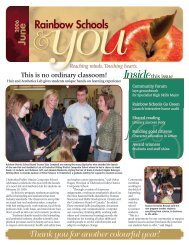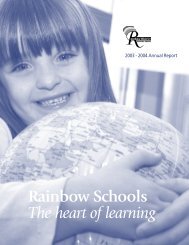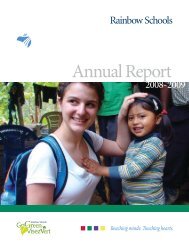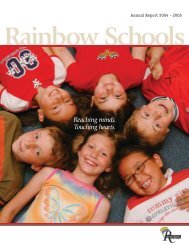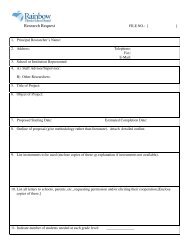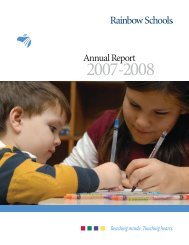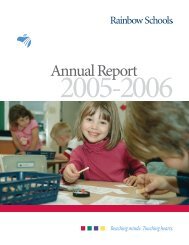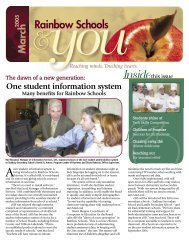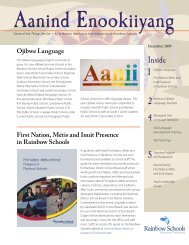Doing Mathematics with Your Child, Kindergarten to ... - EduGains
Doing Mathematics with Your Child, Kindergarten to ... - EduGains
Doing Mathematics with Your Child, Kindergarten to ... - EduGains
You also want an ePaper? Increase the reach of your titles
YUMPU automatically turns print PDFs into web optimized ePapers that Google loves.
Numbers are everywhere!<br />
So Many Things <strong>to</strong> Count!<br />
Benefits<br />
When children first begin <strong>to</strong> count, they learn important mathematical ideas:<br />
• One-<strong>to</strong>-one correspondence (one number for one object)<br />
• Stable order (we count 1, 2, 3, 4, … not 1, 2, 7, 5, …)<br />
• Cardinality (the last number counted tells how many)<br />
Tip!<br />
When children are learning <strong>to</strong> count, they like <strong>to</strong> <strong>to</strong>uch, point <strong>to</strong> and<br />
move objects as they say the number aloud – so encourage them <strong>to</strong>!<br />
• Have your child count <strong>to</strong>ys, kitchen utensils, items of clothing as they come out of the<br />
dryer, collections (such as stickers, but<strong>to</strong>ns or rocks) and any other items your child<br />
shows interest in counting.<br />
• Mix it up! Have your child count a set of objects but start at different places in the set<br />
(for example, start counting in the middle of the set rather than at the beginning).<br />
This helps <strong>to</strong> develop the idea that the counting of objects can begin <strong>with</strong> any object in<br />
a set and the <strong>to</strong>tal will still be the same.<br />
• Sing counting songs and use counting in meaningful ways in games, such as<br />
Hide-and-Seek. Counting games, rhymes and songs exist in every culture.<br />
Some counting songs and rhymes help children <strong>to</strong> count forward and backward<br />
as well.<br />
• Have your child skip count (counting by twos, fives or tens) <strong>to</strong> count larger groups of<br />
items quickly. Use such objects as blocks, pasta pieces, <strong>to</strong>othpicks or but<strong>to</strong>ns.<br />
Number Sense and Numeration<br />
How Many?<br />
Benefits<br />
As children count, they learn <strong>to</strong> connect quantities (such as five but<strong>to</strong>ns)<br />
<strong>with</strong> their number names (such as the word five) and symbols (such as 5).<br />
• Develop your child’s awareness of the symbols used <strong>to</strong> represent numbers by<br />
making it a game. Look for number symbols in your home and neighbourhood: on<br />
the television remote, on the microwave, on the telephone keypad, in flyers and<br />
media, on signs and on team sweaters.<br />
• Play a number version of I Spy. For example, “I spy something that has the number<br />
five on it,” or “I spy something in this room that there are three of.”<br />
• Ask for your child’s help <strong>to</strong> count items in your home. “I wonder how many chairs<br />
we have around the table? In this room? In the house?” Count windows, light<br />
switches, lamps or beds. You might record “how many” by using a combination of<br />
numbers and pictures.<br />
<strong>Kindergarten</strong> <strong>to</strong> Grade 3<br />
6 <strong>Doing</strong> <strong>Mathematics</strong> <strong>with</strong> <strong>Your</strong> <strong>Child</strong>, <strong>Kindergarten</strong> <strong>to</strong> Grade 6: A Parent Guide<br />
<strong>Doing</strong> <strong>Mathematics</strong> <strong>with</strong> <strong>Your</strong> <strong>Child</strong>, <strong>Kindergarten</strong> <strong>to</strong> Grade 6: A Parent Guide<br />
7



